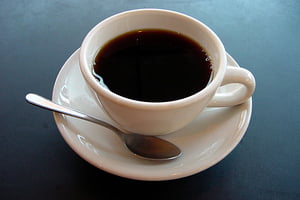Not to be confused with sports drinks, energy soft drinks are advertised to produce mental awareness and to increase physical activity by adding more caffeine, sugar and herbs to make a drink that is actually a stimulant. While most energy drinks have the above they may contain other ingredients, including ginseng, taurine and guarana. The average eight ounce can of an energy drink “has about 80 mg of caffeine” (Wikipedia.org).
People consume energy drinks for several reasons. The first is that they need to stay awake and do not like the taste of coffee. For example, a college student is cramming for an exam and needs all the time to get prepared. Therefore, he needs to stay awake longer. Another example is the person driving a long distance and trying to get as many miles as possible before pulling over.
Another reason is to be more alert. In a study, an energy drink “was given to eleven tired participants being tested in a driving simulator. Lane drifting and reaction times were measured for two hours post-treatment and showed significant improvement” (Wikipedia.org).
Even though they were marketed as these at first, energy drinks have been around for over one hundred years. Here are some keys milestones in the energy drink business:
1901-Iron Brew was produced in Scotland.
1960s-Japan started selling Lipovitan in small brown glass bottles. These bottles contained a concentrated amount of the drink which was equivalent to a full-sized can of the drink. People believe that Red Bull was the first energy drink that was sold as a shot. However, these have been around much longer.
1960s-Energy drinks, such as Gatorade were marketed to help improve performance in athletes.
1980s-energy drinks were marketed to help individuals regain energy. However, these originally were made in 1929 to be used as a hospital drink to help people recover quicker after surgery.
1985-Jolt came out with its first drink. Its motto was “All the sugar and twice the caffeine” (Wikipedia.org) This drink was popular among college students who were cramming for their finals.
1995-Pepsi Company marketed Josta. This was the first time a major beverage company marketed energy drinks. Previously the companies that marketed these drinks just produced energy drinks.
2001-Coca-Cola started marketing Powerade. This was the first time these drinks were sold in aluminum bottles with screw caps.
2002-With the growing demand for energy drinks in larger cans, Red Bull, Monster and other energy drinks were marketed.
2007-Powder and tablets were marketed. These could be added to water to make an energy drink.
Today the energy drink market is growing. A $5.4 billion market in 2007, the energy drink market is expected to reach $10 billion by 2010.
Reference:
http://en.wikipedia.org/wiki/Energy_drink





